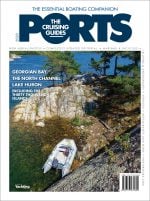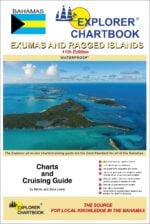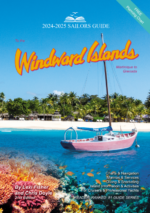Candidates for the Master 500 GT Near-Coastal Oral Exam should demonstrate the ability to apply the knowledge outlined in this oral examination syllabus (shown below) by the appropriate responses, anticipations and reactions to a range of routine, non-routine and contingency scenarios as presented by the examiner, from the perspective of the duties and responsibilities associated to the validity of the Master 500 Gross Tonnage, Near Coastal certificate, as set out in section 8.2 of the Syllabus. The examination is of an unlimited duration.
| Subject | Knowledge Required |
| Competence | Plan and conduct safe navigation |
| Routeing in accordance with the General Principles on Ships’ Routeing and weather routeing | The use of pilot charts and other nautical publications such as Sailing Directions, Notices to Mariners and the like to select an optimum route, taking into account distance, wind, sea states, currents, ice, icebergs, bad visibility, the nature of the cargo, load lines, crew agreements, etc; The principles of Weather Routeing; The practical use of weather forecasts before undertaking a voyage and for decision making during the voyage; The interpretation of a synoptic chart to forecast local area weather; The characteristics of various weather systems. |
| Establish and maintain a Safe Navigational Watch | Principles to be observed in keeping a navigational watch as set out in the STCW Code, section A-VIII/2, including under pilotage, and watchkeeping at anchor and in port; A thorough knowledge of the content, application and intent of the International Regulations for Preventing Collisions at sea, 1972 with Canadian Modifications 1983; Knowledge of the Canadian System of buoyage; ability to determine magnetic compass error and care of magnetic compass. |
| Competence: | Manoeuvre the ship |
| Knowledge of factors affecting safe manoeuvring and handling | The effects of deadweight, draught, trim, speed and under keel clearance on turning circles and stopping distances:General manoeuvring characteristics of merchant vessels of all types; Definitions of terms: turning circle, advance, transfer, drift angle, tactical diameter, track reach, head reach and side reach; Turning circles of a ship in the loaded and ballast conditions, at different speeds; Accelerating turn and decelerating turn; Stopping distances in loaded and ballast conditions; The effect of shallow or deep water on the turning circle; Directional stability. Knowledge of the effects of wind and current on ship handling: Behaviour of the ship when engines are put astern; the pivoting point when manoeuvring with headway and with sternway; Behaviour of a ship when moving ahead or stopped with a wind from various directions; Effects of wind when making large turns, on a disabled vessel, when the ship is slowed, when making sternway; Creating a lee; The effect of current on the motion of a ship, when in rivers and narrow channels, when turning in a channel; Use of an anchor to dredge down with a current; |
| Knowledge of factors affecting safe manoeuvring and handling | Knowledge of squat, shallow water and similar effects: Definition of shallow water, squat, blockage factor; Shallow water effects as: increased directional stability, a large increase in turning radius, the ship carrying her way longer and responding slowly to changes in engine speed, speed falling less during turns, squat increasing, trim changing; Effect of squat on manoeuvrability; Effect of bank suction and bank cushion in restricted waters; The squat and other shallow water effects increase as the blockage factor increase; Propeller and rudder effects on steering, including wake current, transverse thrust and screw race when going ahead and astern. |
| Ship-Handling in various berthing, anchoring, locking situations and ice navigation | The use of Fixed or controlled pitch propellers; practical berthing and unberthing of a vessel in different wind conditions and with different current prevailing; manoeuvring of twin screws; Anchoring to a single-bower anchor; anchoring to a stern anchor, mooring to two anchors; mooring to a buoy; turning a vessel short round; The use of tugs in manoeuvring; Locking and unlocking a vessel; Awareness of the Seaway Practices and Procedures contained in the Seaway Handbook; handling a disabled ship; Procedures in ice, alone or in convoy, and movements to be expected by an ice breaker with reference to Transport Canada publication Ice Navigation in Canadian Waters. Methods of freeing a vessel from ice utilizing pumping of tanks or flume system. |
| Proper procedures for anchoring and mooring | Preparation of anchors to be ready for use; The approach to an anchorage; The use of anchor buoys; Safety measures to be taken by the anchor party; Method of letting go; Fittings and cable markings; Communication with the bridge; Anchoring in water too deep to let the anchor go on the brake; Securing of anchors on the completion of anchoring; Preparation and procedures during heaving up; Securing anchor gear in preparation for sea passage; Use, care and stowage of mooring lines, types of line used for mooring and their characteristics; Names of the various mooring lines and orders; Preparation to be made for berthing alongside, including head ropes, stern ropes, breast ropes, springs, stopper, heaving lines, winches, self-tensioning winches, capstan, windlass, wire rope; Making fast on-shore bollards being used by another ship; Use of mooring on the bight and doubling up; Use, handling and securing of towing wires; Handling and securing of insurance wires; Use of lines in securing a vessel and in warping alongside a berth; Use of lines in a lock or lay-by; How to make fast tugs on towing hawsers or lashed up alongside; Methods of mooring to a buoy; Use of a messenger to pass on a wire or chain to a buoy; |
| Normal and emergency towing operations | Practical knowledge of normal and emergency towing and in particular of the following elements: Taking and being taken in tow; Cables used for towing and the required length; The towing point; Towing bitts and hooks; How to approach a vessel to be towed and pass the first connection by line-throwing apparatus or other methods; How to pay out the towing wire under control; Methods of securing the towing wire at the towing ship; How the towing wire should be protected from chafing at fairleads; How to take the weight of the tow; How the towing speed should be decided; The effect of the towing cable on the centre of gravity of the tug and on its stability; Events that may result in the capsizing of the tug; The different ways to instantly release the towing cable in an urgent situation; The use of an emergency tow line; How to disconnect the tow on arrival at the destination. |
| Competence: | Response to Emergencies |
| Knowledge and understanding of the precautions for the protection and safety of passengers in emergency situations | Contingency plans for response to emergencies Knowledge of the content of a muster list and emergency instructions; Division of the crew into command team, an emergency team, a back-up emergency team and an engine-room emergency team; Knowledge of the composition of emergency teams; Good communications between the command team and the emergency team are essential; Duties of the crew members not assigned to emergency teams; Action to be taken to deal with fire in specific areas, rescue of victims of a gassing accident in an enclosed space, heavy weather damage, rescue of survivors from another ship or the sea, leakage and spills of dangerous cargo, stranding and abandon ship; The importance of drills and practices. |
| Knowledge and understanding of the initial action to be taken following a collision or grounding: initial damage assessment and control | Protection and safety of passengers Familiarization of Crew members with their specific duties for the mustering and control of passengers; Knowledge of the specific duties to assign to crew members; Content of the pre-departure safety briefing to passengers; the need to communicate effectively with passengers during an emergency. Precautions to be taken when beaching; Actions to be taken on stranding; Actions to be taken following a collision; Actions to be taken after an accidental flooding; Means of limiting damage and salving the ship following a fire or explosion; Procedures for abandoning ship. |
| Respond to a distress signal at sea and procedures to be followed for rescuing persons from the sea, assisting a ship in distress, responding to emergencies which arise in port | Rescue of persons from a vessel in distress from a wreck or from the sea; Measures for assisting a vessel in distress; sources of medical assistance and information.Emergencies in port Actions, which can be taken when emergencies arise in port; action on discovery of fire aboard or ashore, fire alarms ashore; precautions when taking on or transferring fuel, water or stores; action to be taken in event of excessive ranging, parted moorings, burst oil lines, tank overflows, striking by another vessel, taking bottom, leakage and spills of dangerous cargo |
| Emergency steering | Arrangements of auxiliary steering gear; How the auxiliary steering gear is brought into action; How to change from bridge control to local control in the steering gear compartment; Possible course of action which may be taken by a disabled ship; Methods of securing the rudder in the event of a broken rudder stock; Jury steering arrangement using materials normally found aboard ship; Means of constructing a jury rudder, where practicable. |
| Competence: | Respond to a distress signal at sea |
| Knowledge of the contents of the IMO International Aeronautical and Maritime Search and Rescue manual (IAMSAR) | Search and Rescue Knowledge and understanding of the content and application of the IMO International Aeronautical and Maritime Search and Rescue manual (IAMSAR). |
| Competence: | Ensure compliance with pollution-prevention requirements |
| Ensure compliance with pollution-prevention requirements | Precautions to be taken to prevent pollution of the marine environment as required by the MARPOL convention, including Restricted Areas and the disposal of pollutants; Take appropriate action in response to pollution incidents onboard and found at sea; Knowledge of the contents of the SOPEP manual, Garbage Management Plans and anti-pollution equipment; Master’s duties, obligations and liabilities, including the keeping of records. |
| Competence: | Maintain seaworthiness of the ship |
| Seaworthiness of the ship | Precautions to be taken before the onset of heavy weather, management of small ships in heavy weather; Understand the fundamentals of watertight integrity; Preparation for dry- docking and undocking, with and without cargo / damage – general procedure and precautions to be observed; Working knowledge of stability and trim information. |
| Competence: | Monitor compliance with legislative requirements |
| Monitor compliance with legislative requirements and measures to ensure safety of life at sea | Master’s duties on taking over and relinquishing command; Preparation of the vessel for inspection and surveys; Knowledge of master’s / ship’s responsibilities under the Marine Personnel Regulations; knowledge and application of the Marine Occupational Safety and Health Regulations; Basic Knowledge of the international convention on safety of life at sea (SOLAS); the requirements of the CSA and Marine Personnel Regulations concerning crew agreements, the official log book and compulsory entries, inspection of living quarters and storerooms, complaints procedure; The master’s obligation with regard to initial and subsequent reports to be made in case of a marine occurrence; The requirements of the regulations concerning life-saving and fire-fighting appliances; Application of hours of work and rest legislation; Navigation Safety Regulations relating to danger messages; A knowledge of the master’s obligations with respect to pilotage; Purpose and application of the International Safety Management (ISM) Code; Purpose of Flag State and Port State control. |






